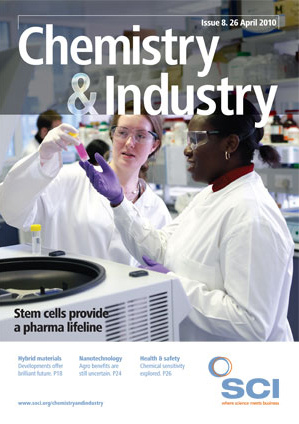Biological drugs have been hampered by the need to administer them intravenously at a hospital. Emma Dorey looks at latest subcutaneous technology to get around this tricky problem
Biological therapies – drugs based on proteins and monoclonal antibodies – are one of the fastest growing pharmaceutical segments, set to outpace growth in the small molecule sector. However, biologics suffer from a problem: their large size means that many need to be administered intravenously in a hospital setting. This leaves patients facing the inconvenience of a trip to hospital for every treatment, lowering compliance and costing the health service time and money. Now, Swiss drug giant Roche is investing CHF190m ($183m) in a subcutaneous system to address this problem. And this would allow breast cancer patients to administer a new formulation of Herceptin (trastuzumab) themselves.
Question marks over the uptake of the new formulation
As well as providing greater convenience for patients and freeing up hospital resources, analysts say switching patients to the new formulation could help protect its market share against increasing competition from oral drugs and biosimilars. Although there are question marks over the uptake of the new formulation, analysts expect to see an increase in such lifecycle management strategies, as the lucrative monoclonal antibody market approaches maturity. Herceptin is currently the leading treatment for HER-2-positive breast cancer, generating $4.7bn in global sales in 2008. Because of their relatively large size, biological treatments, such as Herceptin and other monoclonal antibodies, must be administered intravenously. The large molecules cannot be absorbed by the stomach or gastrointestinal system so, if administered orally, the amount of medication reaching the circulation system would be too low to have any therapeutic effect. When the antibodies are administered intravenously, they enter the circulatory system immediately and in effective concentrations, says Nina Schwab-Hautzinger, Roche media spokesperson.
Currently, 10–20ml of liquid containing Herceptin is administered intravenously over 30–90 minutes, which normally means a trip to a hospital or IV infusion centre for patients, many of whom will receive treatment for a year.
What Roche is doing is developing a ready-to-use injection device, about the size of a mobile phone, which will deliver biologics – Herceptin to start with – subcutaneously and much more quickly.
Normally it is very hard to subcutaneously inject more than 1ml of liquid, but much more than that can be administered intravenously, into a vein or IV. To allow subcutaneous delivery of Herceptin, the new device will deliver a new formulation of Herceptin that has been developed using Halozyme Therapeutics’ Enhanze technology, which increases the absorption and dispersion of biologics under the skin. The Herceptin antibodies are mixed together with the recombinant human enzyme hyaluronidase (rHuPH20), which causes degradation of hyaluronan, a structural component found under the skin. This degradation opens up channels under the skin and acts as a spreading agent so that an injection into the skin can be absorbed into the capillaries or into the lymph system, explains Robert Uhl, senior director of investor relations at Halozyme. The degradation of the structural components under the skin is only temporary and most of it is fully restored within 24 hours.
‘The one-hour infusion time of Herceptin could be potentially slashed to 5 minutes with the new formulation developed using Halozyme’s technology,’ says Tania Rodrigues, healthcare and pharmaceutical analyst at IHS Global Insight. ‘The new technology allows administration of up to five times more volume than normally viable via subcutaneously injected medicines, thus permitting the formulation to be taken at the family doctor’s office or at home and ultimately avoiding a stressful hospital visit.’
The new device will allow patients to either self-administer subcutaneous Herceptin at home, monitored by a healthcare professional, or receive it at their family doctor’s clinic – increasing convenience for patients and freeing up hospital and pharmacist resources. Subcutaneous delivery could also improve the drug’s side-effect profile by reducing infusion reactions, according to the companies.

Annual sales of biologics are forecast to increase by more than $40bn from $124bn between 2009 and 2014, whereas total sales of traditional small molecules are forecast to decline following the 2012 patent cliff, according to Datamonitor.
Subcutaneous delivery devices – such as Abbott’s Humira (adalimumab) pen for rheumatoid arthritis, for example – are already extremely popular in the autoimmune disorder market where they offer better levels of compliance, convenience and are more cost effective, points out Joshua Owide, senior analyst on the PharmaVitae drug company comparison tool, Datamonitor.
And several other pharmaceutical firms are looking at subcutaneous delivery of biologics. Under the deal struck with Halozyme in 2006, Roche has a license to formulate rHuPH20 with up to 13 of its biologics for subcutaneous injection. Subcutaneous Herceptin is currently in Phase III trials, while the MabThera/Rituxan (rituximab) subcutaneous injection for non-Hodgkin’s lymphoma is currently in Phase I studies.
Halozyme is also working with Baxter BioScience to deliver subcutaneous Gammagard, an immunoglobulin product approved for the treatment of primary immunodeficiency, a range of disorders in which the body’s immune system is missing an important component. This programme is in a Phase III pivotal trial that should be completed by the end of 2010 with regulatory filing for approval sometime in 2011. Uhl says additional companies are conducting feasibility studies and evaluating the use of Halozyme’s enzyme in formulations with their products.
And other pharmaceutical firms are developing alternative delivery systems for established treatments. Bristol-Myers Squibb (BMS), for example, is researching a new subcutaneous administration of Orencia (abatacept) for patients with moderate to severe rheumatoid arthritis. In October, BMS reported data from an open-label trial of subcutaneous administration of Orencia demonstrating efficacy and no immunogenicity at four months.
‘One of the main reasons fuelling these new developments is to improve patient convenience and to a certain extent compliance. For example, with cancer, as it becomes to a certain extent more chronic in nature and with some treatment regimens currently extending from several months to years, there are likely to be more subcutaneous formulations of established intravenously delivered medicines,’ says Rodrigues.
However, Rodrigues points out that there is already a greater trend towards the development of orally administered drugs. Moreover, Roche could find it challenging to encourage uptake of subcutaneous Herceptin because it will make it more difficult for physicians to ensure patient compliance, says Gray. ‘Patient compliance can be a problem for some orally administered anticancer drugs,’ she adds. ‘In the US, financial incentives for oncologists to prescribe intravenous drugs could further restrict uptake of the subcutaneous formulation. The ongoing Phase III study may therefore have to show that the more convenient subcutaneous formulation also has superior efficacy in order to drive appreciable uptake.’
Emma Dorey is a freelance life science writer based in Brighton, UK.





